West Java is one of the five provinces of Java, Indonesia. Bandung is the capital city. The greater part of west Java is mountainous, with the Priangan highlands forming the core territory. 21 mounts can be found here, most of which are classified as active volcanoes and have become an integral part of tourism in the West Java province.
Mount Tangkuban Perahu (capsized boat) is one of them. A smouldering 2000m wide, surrealistic volcano 1800m above sea level, it lies 28 km north of Bandung reachable within 30 minute ride.
The Legend of Sangkuriang
This is an example of how nature was converted into a legend, such as Bandung lake and Mt Tangkuban Perahu with the story of Queen Dayang Sumbi and her son Sangkuriang cited from Neuman va Padang (1971). Once Sangkuriang, whilst growing up, he was so naughty and got hurt and the wound formed an ugly scar.
The King, who loved his son above everything was so furious that his son had hurt himself that he rejected his wife. Fifteen years later, being of age, Sangkuriang asked his father permission to take a trip to West Java. After arriving in the plain of Bandung, he met a beautiful lady, fell in love and ask her to marry him and she accepted. But one day when she caressed her lover's head she saw the wound. The loving woman, turned out to be the disowned queen, discovered that she was in love with her son and marriage was impossible.
The marriage had to be prevented. Not willing to admit that she was his mother she thought of a way out. The day before the wedding was due to take place, she said to her husband to be, tomorrow is our wedding day, and if you are true to your love to me and love me as much you say do then I want to celebrate the wedding on board a ship, a proa. Tomorrow morning at day break, I want to sail with you on a great lake in a nice boat and there must be a banquet feast. Sangkuriang was embarrassed but he was not willing to refuse. He begged the help of the lake's helpful spirits. By causing a landslide, the lake spirit dammed the river Citarum that flowed through the plain of Bandung. The force of the water felled big tree and a boat was constructed while other lake spirits prepared the wedding banquet.
Early in the morning the Queen saw that the impossible had been realised so she prayed to Brama, the mighty God, to help her to prevent the disgrace of a marriage between a mother and her son. Brama destroyed the dam in turbulence and Sangkuriang was drowned. The queen in her agony threw herself on the capsized boat, breaking through the hull of the ship and was also drowned.
Now, the vast plain of Bandung is flanked on its north side by the volcano Tangkuban Perahu, the capsized boat. The Queen's jump on the hull of the ship is the Kawah Ratu, the crater of the Queen. The hot fumaroles and tremors in the crater represent the tears of the sad mother still sobbing. East of Mt Tangkuban Perahu rises the Bukit Tunggul, trunk mountain, the trunk of the tree from which the boat was made and to the west we find Mt Burangrang, the “crown of leaves”. At many places along the shore of the lake Neolithic obsidian tools of primitive inhabitants are found and described by von Koeningswald (1935). These Neolithic people noticed that the hold was cut deeper and deeper by erosion caused by the lowering water. Finally only a marshy plain remained.
Centuries later the inhabitants of Bandung plain still know about the legend of the existence of a former lake. Not knowing anything about geology, but living in the taboos of spirit ghosts and Gods, geological facts were put together in a tale that was understandable.
If you are thinking of holiday trip, or even just information on any travel requirements in Java especially Indonesia, please do not hesitate to contact me. I'll be most happy to assist you. Tedy can be contacted by e-mail as follows: abctour_td@cbn.net.id.
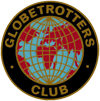
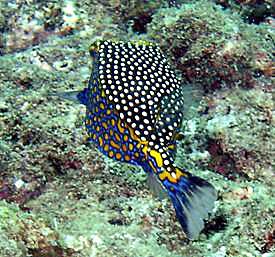 Very good
diving, all drift diving, some strong currents, including down
currents – hhhmm – oh, and dynamite fishing whilst we were in the
water! This was a little scary. The previous day we'd been
out diving around Menjangen Island when we unexpectedly came
across several men diving along side us, breathing in compressed
air from an umbilical cord leading from a boat on the surface.
They had a couple of weights wrapped around their waist but no
other safety equipment, like a gauge to tell them how deep they
were or how long they'd been in the water.
Very good
diving, all drift diving, some strong currents, including down
currents – hhhmm – oh, and dynamite fishing whilst we were in the
water! This was a little scary. The previous day we'd been
out diving around Menjangen Island when we unexpectedly came
across several men diving along side us, breathing in compressed
air from an umbilical cord leading from a boat on the surface.
They had a couple of weights wrapped around their waist but no
other safety equipment, like a gauge to tell them how deep they
were or how long they'd been in the water.
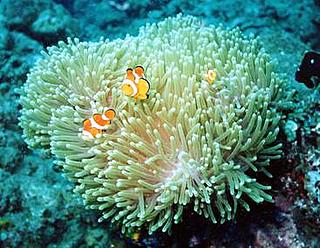 This was not
quite in the protected WWF marine reserve where I mostly dived,
but they most definitely should not have been doing this. They
were no more pleased to see us than me and the dive instructor I
was with, were to see them. They knew they were 'in the
wrong' and it was a very awkward situation under water, a
little aggressive and certainly very threatening. When we got
back to our dive boat, and were returning to our hotel, the
Japanese instructor (a tiny little thing, with the strength of
Goliath) said in Indonesian (which I picked up a fair bit of!) to
the guys on the pirate boat that she was going to call the
police. They were not impressed.
This was not
quite in the protected WWF marine reserve where I mostly dived,
but they most definitely should not have been doing this. They
were no more pleased to see us than me and the dive instructor I
was with, were to see them. They knew they were 'in the
wrong' and it was a very awkward situation under water, a
little aggressive and certainly very threatening. When we got
back to our dive boat, and were returning to our hotel, the
Japanese instructor (a tiny little thing, with the strength of
Goliath) said in Indonesian (which I picked up a fair bit of!) to
the guys on the pirate boat that she was going to call the
police. They were not impressed.
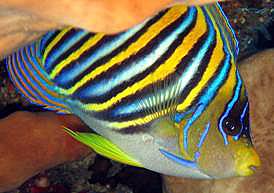 The next day
we dived in a different part of the same marine sanctuary, when
we heard this massive boom. There is only one sound, that, even
under water sounds like that – explosives. I was rather scared,
to put it mildly! Someone close by was dynamite fishing. It was
not a good feeling, and I thought that maybe, just maybe, my time
was up, and this is how it was all going to end – making enemies
with Indonesians stealing tropical fish who dynamited us out of
the water for revenge. But, as you can see, they did not dynamite
us, but there were four explosions on that dive and they were
further away than I first thought, but it was still very scary,
the whole water and landscape seems to vibrate and shake, almost
as if it was crying.
The next day
we dived in a different part of the same marine sanctuary, when
we heard this massive boom. There is only one sound, that, even
under water sounds like that – explosives. I was rather scared,
to put it mildly! Someone close by was dynamite fishing. It was
not a good feeling, and I thought that maybe, just maybe, my time
was up, and this is how it was all going to end – making enemies
with Indonesians stealing tropical fish who dynamited us out of
the water for revenge. But, as you can see, they did not dynamite
us, but there were four explosions on that dive and they were
further away than I first thought, but it was still very scary,
the whole water and landscape seems to vibrate and shake, almost
as if it was crying.
 We are sorry
to say that Mac is not very well, but he is still e-mailing
strong and recently sent the Beetle a collection of travel
reminiscences about China.
We are sorry
to say that Mac is not very well, but he is still e-mailing
strong and recently sent the Beetle a collection of travel
reminiscences about China.
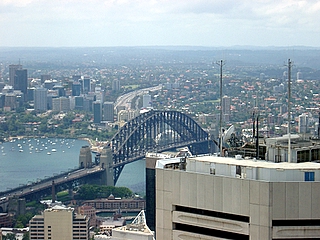 Start in Sydney’s south at the Royal National
Park, the 2nd oldest national park in the world, after Yellowstone. On
Sunday’s you can take the train to Loftus station and then get a tram
right into the park. It’s a short walk from the tram to the visitor’s
centre, where maps and information about trails are provided.
Start in Sydney’s south at the Royal National
Park, the 2nd oldest national park in the world, after Yellowstone. On
Sunday’s you can take the train to Loftus station and then get a tram
right into the park. It’s a short walk from the tram to the visitor’s
centre, where maps and information about trails are provided. 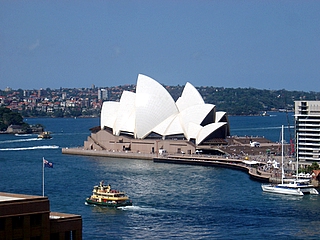 Some trails are challenging, but there is something for everyone and
you can spot many native animals in their natural habitat (just steps
from the visitor’s centre we spotted a Lyre bird, several rainbow
lorikeets and rosellas, white cockatoos as well as the more rare black
variety). It is quite calming listening to all the sounds of the bush
and to know that in one hour you can be back in the city centre and be
shopping in some of the best stores and eating in the best restaurants.
Available too are hire boats to row on the lake, picnic areas and a
place to buy a meat pie, should all that walking make you hungry for
some good Aussie tucker.
Some trails are challenging, but there is something for everyone and
you can spot many native animals in their natural habitat (just steps
from the visitor’s centre we spotted a Lyre bird, several rainbow
lorikeets and rosellas, white cockatoos as well as the more rare black
variety). It is quite calming listening to all the sounds of the bush
and to know that in one hour you can be back in the city centre and be
shopping in some of the best stores and eating in the best restaurants.
Available too are hire boats to row on the lake, picnic areas and a
place to buy a meat pie, should all that walking make you hungry for
some good Aussie tucker. 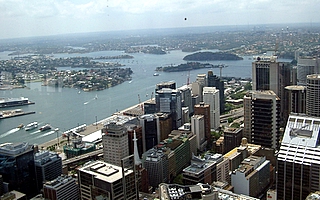 It’s also good to know the Harbour foreshore and most beaches now have
wonderful walking trails as well. You can walk from Darling Harbour,
around The Rocks and Circular Quay and around to Mrs. Macquarie’s Chair
and Darlinghurst along one trail and take the ferry to Taronga Zoo on
the other side and walk still another trail there.
It’s also good to know the Harbour foreshore and most beaches now have
wonderful walking trails as well. You can walk from Darling Harbour,
around The Rocks and Circular Quay and around to Mrs. Macquarie’s Chair
and Darlinghurst along one trail and take the ferry to Taronga Zoo on
the other side and walk still another trail there. 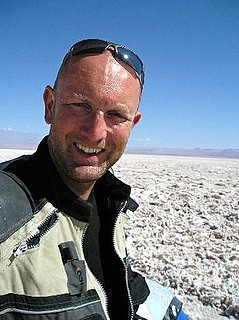 My name is Greg McKenzie
and I’m currently taking a break from earning a living to do something
which has festered in the back of my mind for a while now – a major
motorcycle trip.
My name is Greg McKenzie
and I’m currently taking a break from earning a living to do something
which has festered in the back of my mind for a while now – a major
motorcycle trip. 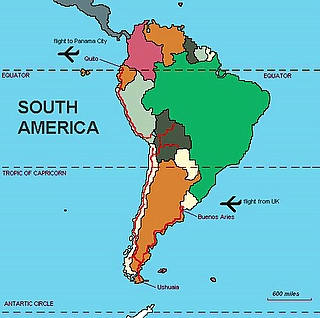 I land
in Buenos Aries, Argentina on 21st January 2005,
briefly travelling north to visit Montivideo, Uruguay
before turning south heading for Ushuaia, just short of Cape Horn.
I land
in Buenos Aries, Argentina on 21st January 2005,
briefly travelling north to visit Montivideo, Uruguay
before turning south heading for Ushuaia, just short of Cape Horn. 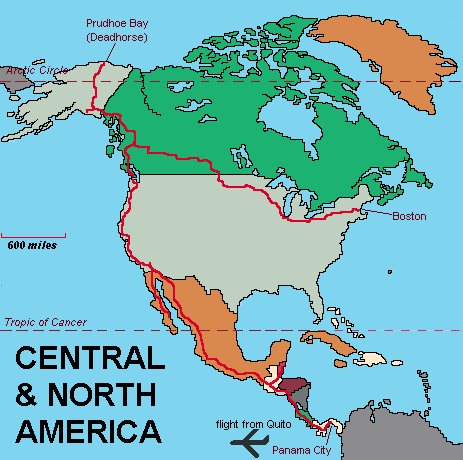 I intend to visit the Baja peninsula for
some sea-kayaking and more trekking before continuing up into the USA
stopping at Los Angeles and San Francisco on the way.
I intend to visit the Baja peninsula for
some sea-kayaking and more trekking before continuing up into the USA
stopping at Los Angeles and San Francisco on the way. 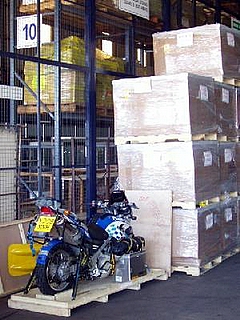 This morning I swapped the rather average
hotel breakfast for a much better offering from a café on
Plaza del Mayo. Coffee so think it could stand for election. A few
photo´s are attached below to get a flavour of the city. In
truth I´m still seeing the parts of B.A. that some Minister
of Tourism encourages us to see. Despite taking a stroll away from the
tourist / shopping centre today towards the more
´bohemian´ San Telmo barrio this afternoon (lots of
shaded cobbled streets and quaint antique shops) I´m still on
the tourist trail I think.
This morning I swapped the rather average
hotel breakfast for a much better offering from a café on
Plaza del Mayo. Coffee so think it could stand for election. A few
photo´s are attached below to get a flavour of the city. In
truth I´m still seeing the parts of B.A. that some Minister
of Tourism encourages us to see. Despite taking a stroll away from the
tourist / shopping centre today towards the more
´bohemian´ San Telmo barrio this afternoon (lots of
shaded cobbled streets and quaint antique shops) I´m still on
the tourist trail I think. 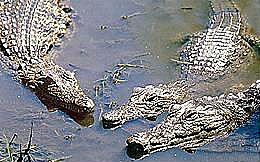 Framed by glowing sunsets and a bountiful
canopy of stars, lies the Kruger National Park. The park, rich in
biodiversity, was established in 1898 and stretches for 350km (approx
140 miles – within the park itself the road network measures in at
about 1300 miles) from the south to north along the Mozambican border
before meeting up with the Zimbabwean border. A paradise for the
wildlife enthusiast with close to 150 mammals to be on the look-out
for, amongst them six cat species, the park also has more than 500
species of birds and over 300 species of trees for the visitor to
identify. With its subtropical climate, the large habitat variety and a
surface area of 19 633km², the park is home to a spectacular
array of fauna and flora and is undoubtedly the world leader in dynamic
environmental management techniques and policies based on experience
gained over more than a century.
Framed by glowing sunsets and a bountiful
canopy of stars, lies the Kruger National Park. The park, rich in
biodiversity, was established in 1898 and stretches for 350km (approx
140 miles – within the park itself the road network measures in at
about 1300 miles) from the south to north along the Mozambican border
before meeting up with the Zimbabwean border. A paradise for the
wildlife enthusiast with close to 150 mammals to be on the look-out
for, amongst them six cat species, the park also has more than 500
species of birds and over 300 species of trees for the visitor to
identify. With its subtropical climate, the large habitat variety and a
surface area of 19 633km², the park is home to a spectacular
array of fauna and flora and is undoubtedly the world leader in dynamic
environmental management techniques and policies based on experience
gained over more than a century. 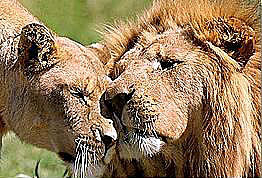 Most
national parks also offer organised night drives or early morning
drives in park vehicles with guides, but they have to stay on the road
and take place at set times, so many people hire a car themselves to
explore the parks on their own. Most parks have rest camps, and
— depending on the park – a range of accommodation,
from camps and huts to bungalows and guest houses. Most accommodation
is equipped with self-catering facilities, although many camps do have
shops, and some have restaurants.
Most
national parks also offer organised night drives or early morning
drives in park vehicles with guides, but they have to stay on the road
and take place at set times, so many people hire a car themselves to
explore the parks on their own. Most parks have rest camps, and
— depending on the park – a range of accommodation,
from camps and huts to bungalows and guest houses. Most accommodation
is equipped with self-catering facilities, although many camps do have
shops, and some have restaurants. 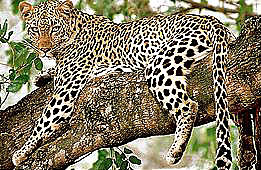 In
the winter, when water is scarce and the plant life dies back, the
animals are easier to spot, especially at water holes and riverbeds.
This is the most popular season, so be prepared to share your safari
with other motorists. The days are warm, but temperatures can drop
close to freezing at night, and units are not heated. Try to avoid
going during the school holidays, particularly in winter, when the park
is packed to capacity.
In
the winter, when water is scarce and the plant life dies back, the
animals are easier to spot, especially at water holes and riverbeds.
This is the most popular season, so be prepared to share your safari
with other motorists. The days are warm, but temperatures can drop
close to freezing at night, and units are not heated. Try to avoid
going during the school holidays, particularly in winter, when the park
is packed to capacity. 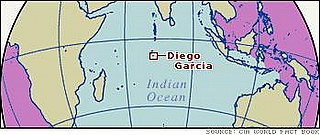 The
The
 Buckingham
Palace has served as the official London residence of Britain’s Kings
and Queens since 1837. Built by George VI on the site of the King’s
House, Pimlico, the shell of which was preserved by Nash, the
architect. Marble Arch once stood in front, but it was later removed to
the western end of Oxford Street where the famous Tyburn Gallows once
stood. When Queen Victoria moved here in 1837, just 10 years after the
works had been carried out, it was barely habitable. There are 600
rooms in the Palace, of which under twenty can be visited, as well as
the Queen’s Picture gallery and the Mews.
Buckingham
Palace has served as the official London residence of Britain’s Kings
and Queens since 1837. Built by George VI on the site of the King’s
House, Pimlico, the shell of which was preserved by Nash, the
architect. Marble Arch once stood in front, but it was later removed to
the western end of Oxford Street where the famous Tyburn Gallows once
stood. When Queen Victoria moved here in 1837, just 10 years after the
works had been carried out, it was barely habitable. There are 600
rooms in the Palace, of which under twenty can be visited, as well as
the Queen’s Picture gallery and the Mews.